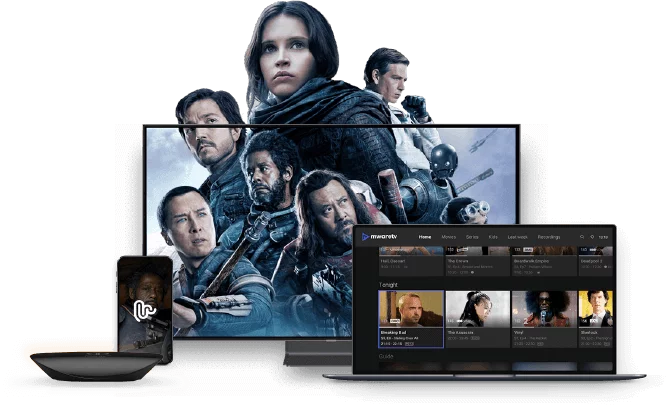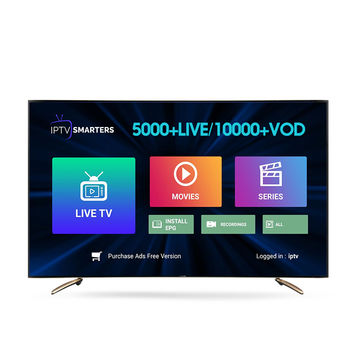Experience Seamless Streaming: Register For Our IPTV Subscription
Experience Seamless Streaming: Register For Our IPTV Subscription
Blog Article
How IPTV Functions: A Step-by-Step Guide to Internet Protocol Tv Modern Technology
Web Method Television (IPTV) has actually changed the way we take in television content, using a brand-new realm of opportunities via the power of the net. Comprehending the ins and outs of how IPTV functions can clarify the modern technology that drives this cutting-edge kind of media distribution. From the fundamental concepts of IPTV to the complex process of content delivery, each action plays an important role in making sure a smooth viewing experience. In this overview, we will certainly discover the hidden systems that make IPTV an interesting fusion of innovation and entertainment.
IPTV Fundamentals
In recognizing IPTV essentials, it is essential to realize the fundamental workings of this innovation in supplying tv web content over the web. IPTV, which represents Web Method Television, utilizes Internet Method (IP) networks to send television content to users' devices. Unlike traditional methods of transmitting tv content through cord or satellite signals, IPTV streams media via high-speed internet links.

Furthermore, IPTV permits interactive capabilities, such as video clip as needed (VOD) and digital program guides (EPG), improving the individual experience by offering even more control and adaptability in accessing content. Overall, understanding the essentials of IPTV establishes the foundation for exploring its advanced functionalities and the advantages it uses to modern-day tv consumption.
Web Content Shipment Process
Effective web content delivery in IPTV systems involves a well-structured procedure that makes sure seamless transmission of television material over IP networks. The material delivery procedure in IPTV begins with the production of the video content, which is then encoded into digital layout appropriate for IP transmission. This inscribed web content is after that securely saved on servers referred to as media servers. When a visitor requests certain web content, the IPTV system retrieves the asked for information from the media web servers and delivers it to the viewer's device over the internet.

Middleware Capability
With the assimilation of middleware, IPTV systems gain improved performance that improves user communication and web content administration. Middleware serves as an essential component that links the space between the interface and the back-end framework, promoting seamless communication and communication within the IPTV system. Among the essential features of middleware in IPTV is to make it possible for individualized user experiences by offering features such as interactive program overviews, video-on-demand services, interactive advertising, and customer preferences management. By systematizing these performances through middleware, provider can offer a much more dynamic and customized IPTV experience to their subscribers.

Device Compatibility
Provided the pivotal Learn More role of middleware in enabling seamless communication and material administration in IPTV systems, a critical element to take into consideration is the compatibility of devices made use of for accessing the IPTV services. Gadget compatibility is vital for making sure a smooth customer experience and ideal efficiency when accessing IPTV web content.
In the context of IPTV, device compatibility describes the capacity of a tool to efficiently connect with the IPTV solution, present material properly, and support the essential methods and codecs for streaming video clip web content over the internet. Various devices, such as smart Televisions, set-top boxes, smartphones, tablet computers, and computers, may have Check This Out differing degrees of compatibility with IPTV services.
To ensure a seamless viewing experience, it is very important for users to select devices that work with the certain IPTV solution they are making use of. In addition, IPTV service companies ought to supply assistance for a vast array of tools to provide to the diverse requirements of their individual base. By prioritizing gadget compatibility, both users and provider can their website improve the total IPTV experience.
High Quality of Solution (QoS)
Taking into consideration the important function of maintaining a high standard of performance and dependability in IPTV systems, making sure consistent Top quality of Solution (QoS) stays an essential facet of the user experience. QoS in IPTV refers to the capacity of the system to supply web content with marginal disruptions, high resolution, and quick loading times.
Solution providers use QoS systems such as web traffic prioritization, buffering, and error improvement to keep a stable IPTV solution. By focusing on IPTV traffic over less time-sensitive data, suppliers can make sure smooth playback also throughout optimal use hours. Buffering aids make up for network changes, while mistake adjustment techniques enhance information integrity.
Constant surveillance and optimization of QoS specifications are necessary to adapt to altering network conditions and individual demands. Inevitably, a durable QoS framework is essential for delivering a smooth and satisfying IPTV experience to users.
Verdict
In verdict, IPTV operates via the transmission of television content over net protocol networks. Top quality of Solution plays an essential function in keeping the effectiveness and reliability of IPTV services - IPTV subscription.
Report this page